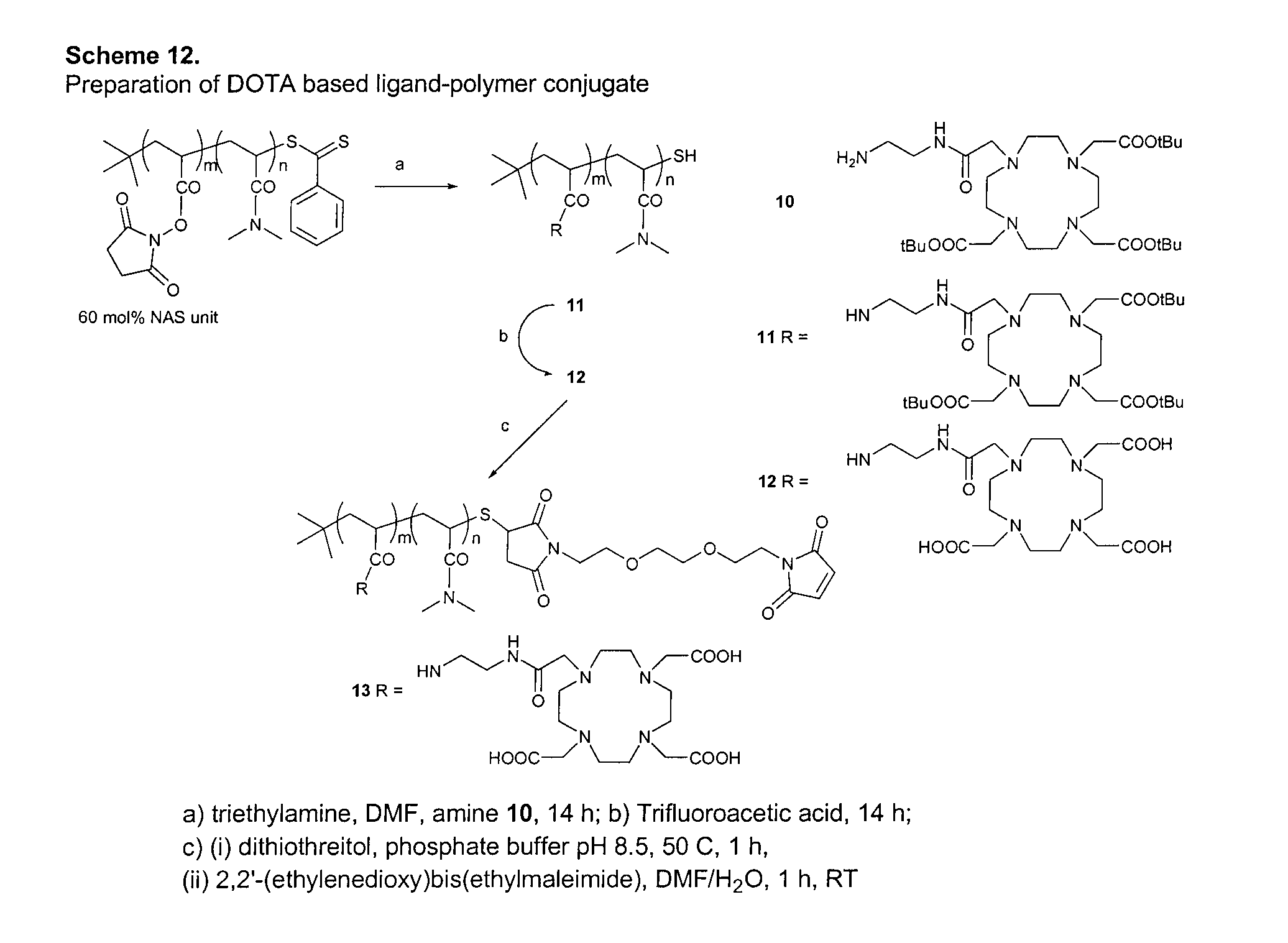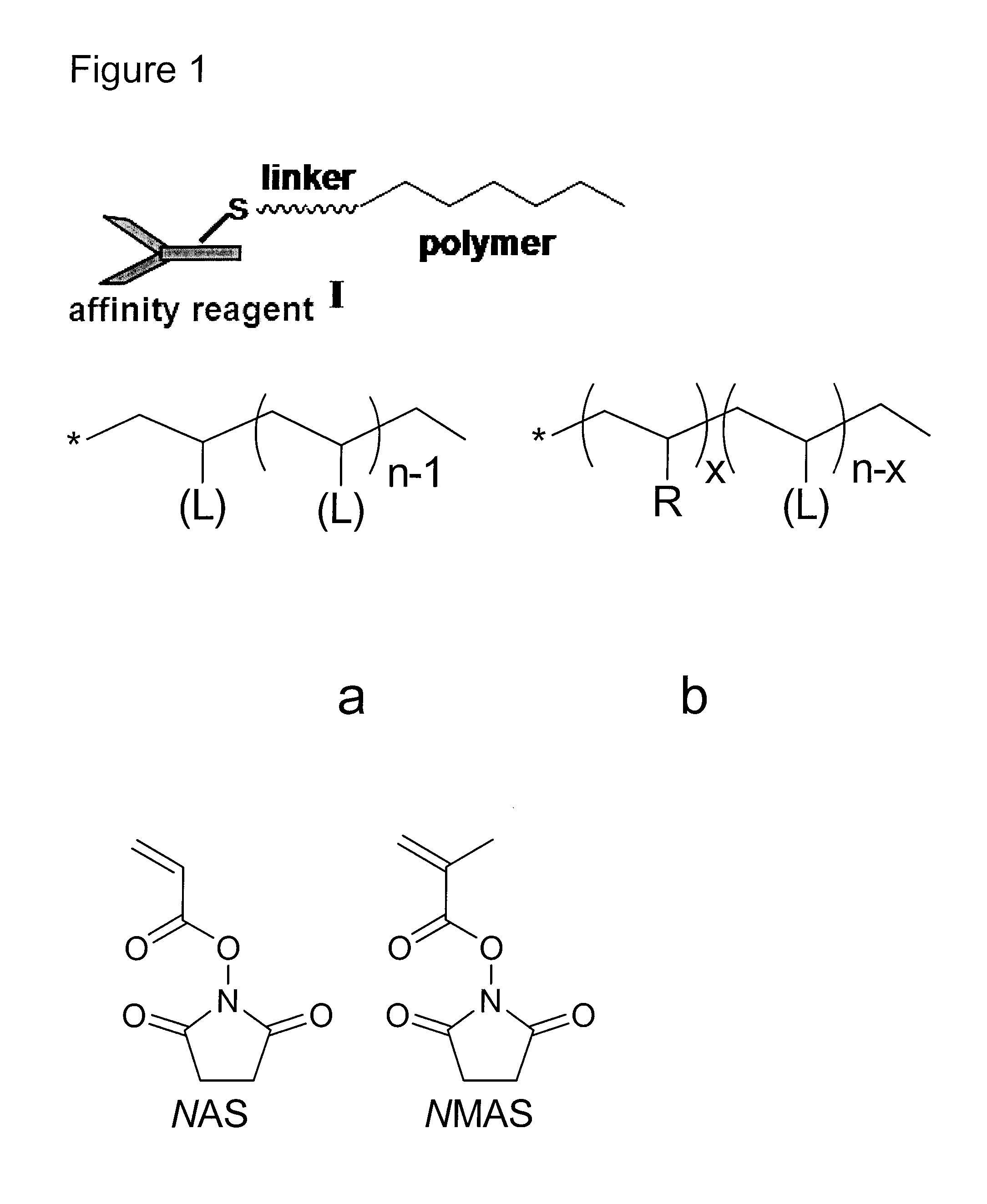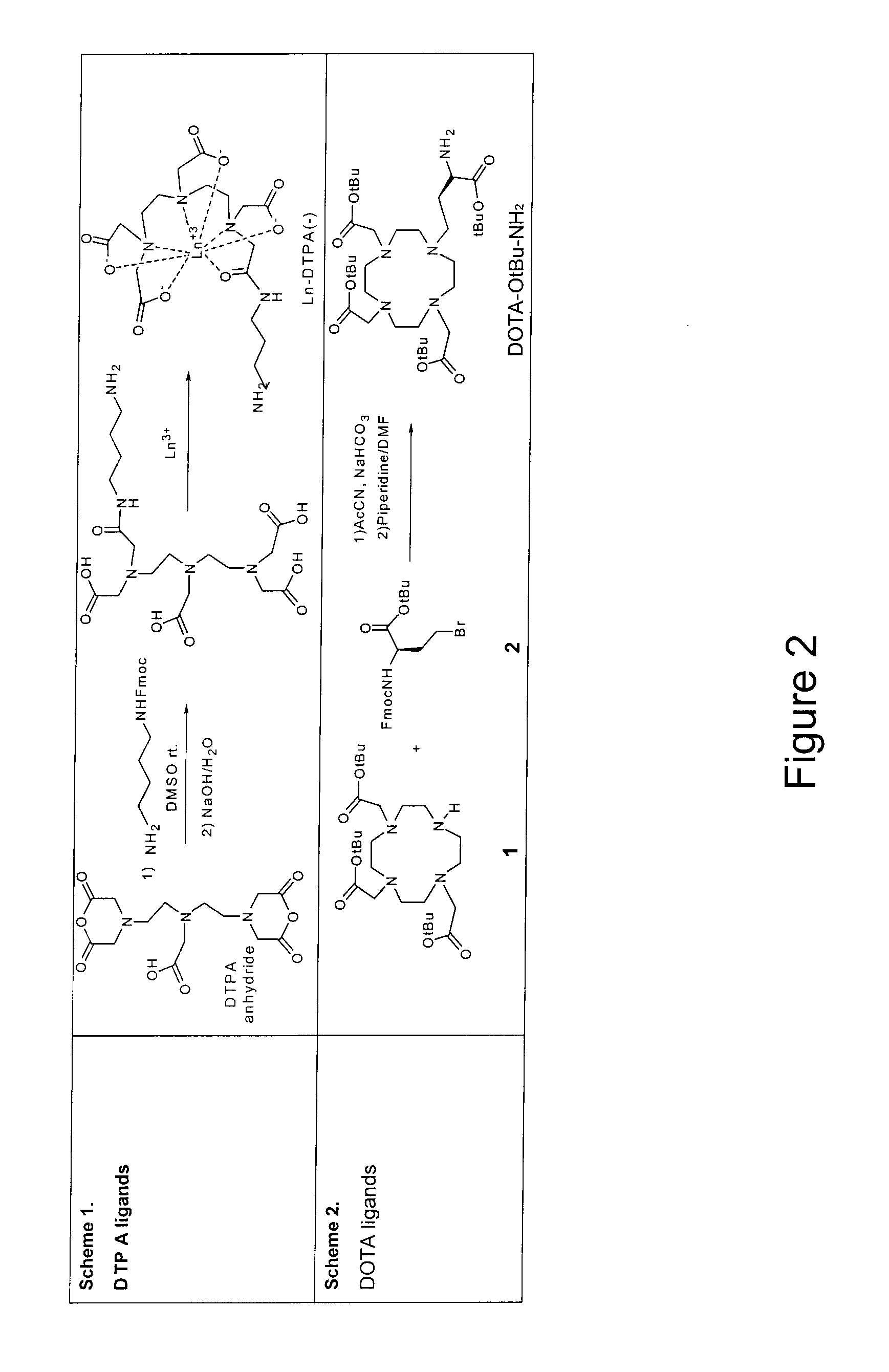Polymer backbone element tags
a backbone element and polymer technology, applied in the field of tagged biomolecules, can solve the problems of insufficient ability, sensitivity, selectivity, dynamic range, etc., and achieve the effect of ensuring independence of detection channels, sensitivity and multiplex capability of bio-assays
- Summary
- Abstract
- Description
- Claims
- Application Information
AI Technical Summary
Benefits of technology
Problems solved by technology
Method used
Image
Examples
example 1
Synthesis of Copolymers of N,N-dimethylacrylamide and N-acryloxysuccinimide by RAFT Polymerization
[0120]N,N-dimethylacrylamide (DMA) and N-acryloxysuccinimide (NAS) were copolymerized by the reversible addition-fragmentation chain transfer (RAFT) polymerization technique, to obtain random copolymer precursors with side-groups statistically grafted via the reactive NAS units19. The random copolymers of DMA and NAS, poly(DMA-co-NAS), were prepared using tert-butyl dithiobenzoate (t-BDB) as chain transfer agent (CTA) (Scheme 9, FIG. 7).
[0121]Preparation of tert-Butyl Dithiobenzoate (t-BDB).34 In a 500 mL round-bottomed flask equipped with a magnetic stirrer, 150 mL of a diethyl ether solution of s-(thiobenzoyl)thioglycolic acid (0.27 g, 2.4 mmol) was added to 100 mL of an aqueous basic solution (NaOH, 1 mol L−1) of sodium 2-methyl-2-propanethiolate (0.510 g, 2.9 mmol). This biphasic mixture was vigorously stirred at room temperature for 5 hours. Then, the purple ether phase was removed...
example 2
Preparation of Ligand-polymer Conjugate
[0128]The following preparation of the polymer ligand conjugate is amenable for use with any amine functionalized ligand according to Scheme 10 and Scheme 11, FIG. 9.
[0129]To a stirred solution of the (N,N-dimethylacrylamide (DMA) and N-acryloxysuccinimide (NAS)) copolymer containing 47 mol % of NAS units (35 mg, 3.5461 mmol) and N,N-diisopropylethylamine (300 μl) in DMF / H2O (60:40, 1 mL) was added a solution of the amine pendant ligand 9, FIG. 9 (78 mg) in the same mixture (2 ml). The reaction mixture was stirred overnight under nitrogen at room temperature. The solvent was removed under vacuum and the solids were dissolved in H2O. The solutions were dialyzed by repeated washings with deionized water (5×4 mL) in an Amicon centrifugal filter (5K MW C.O.) The solution remaining in the filter device was concentrated to give a yellowish solid. The solid was purified further by precipitation from methanol with diethylether to give a yellow powder (...
example 3
Preparation of Ligand-Polymer Conjugate: DOTA Based Conjugate According to Scheme 12, FIG. 10
[0131]To a stirred solution of the DMA-NAS copolymer with 60 mol % of NAS units (100 mg) in DMF (3 mL) and triethylamine (1 mL) was added a solution of amine pendant ligand 10 (363 mg, 0.590 mmol) in DMF (2 mL). The reaction mixture was stirred overnight under nitrogen at room temperature. After the solvent was removed under vacuum, the residue 11 was dissolved in neat trifluoroacetic acid (3 mL) and stirred overnight at room temperature. The solution was evaporated, and the residue was taken up in water and dialyzed by repeated washings with deionized water (6×5 ml) in an Amicon centrifugal filter (5K MW C. O.). The solution remaining in the filter device (ca. 0.8 mL) was concentrated to give a yellow solid 12 (179 mg).
[0132]The entire sample of polymer-ligand conjugate 12 was dissolved in 50 mM phosphate buffer (pH 8.5, 2 mL) containing 20 mM DL-dithiothreitol, and the reaction mixture was...
PUM
| Property | Measurement | Unit |
|---|---|---|
| polydispersity index | aaaaa | aaaaa |
| polydispersity index | aaaaa | aaaaa |
| polydispersity index | aaaaa | aaaaa |
Abstract
Description
Claims
Application Information
 Login to View More
Login to View More - R&D
- Intellectual Property
- Life Sciences
- Materials
- Tech Scout
- Unparalleled Data Quality
- Higher Quality Content
- 60% Fewer Hallucinations
Browse by: Latest US Patents, China's latest patents, Technical Efficacy Thesaurus, Application Domain, Technology Topic, Popular Technical Reports.
© 2025 PatSnap. All rights reserved.Legal|Privacy policy|Modern Slavery Act Transparency Statement|Sitemap|About US| Contact US: help@patsnap.com



